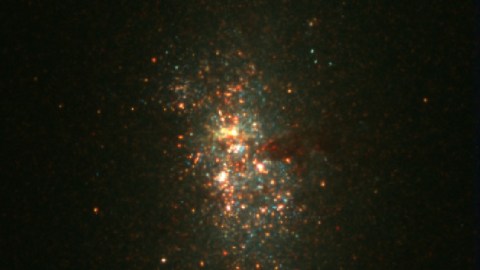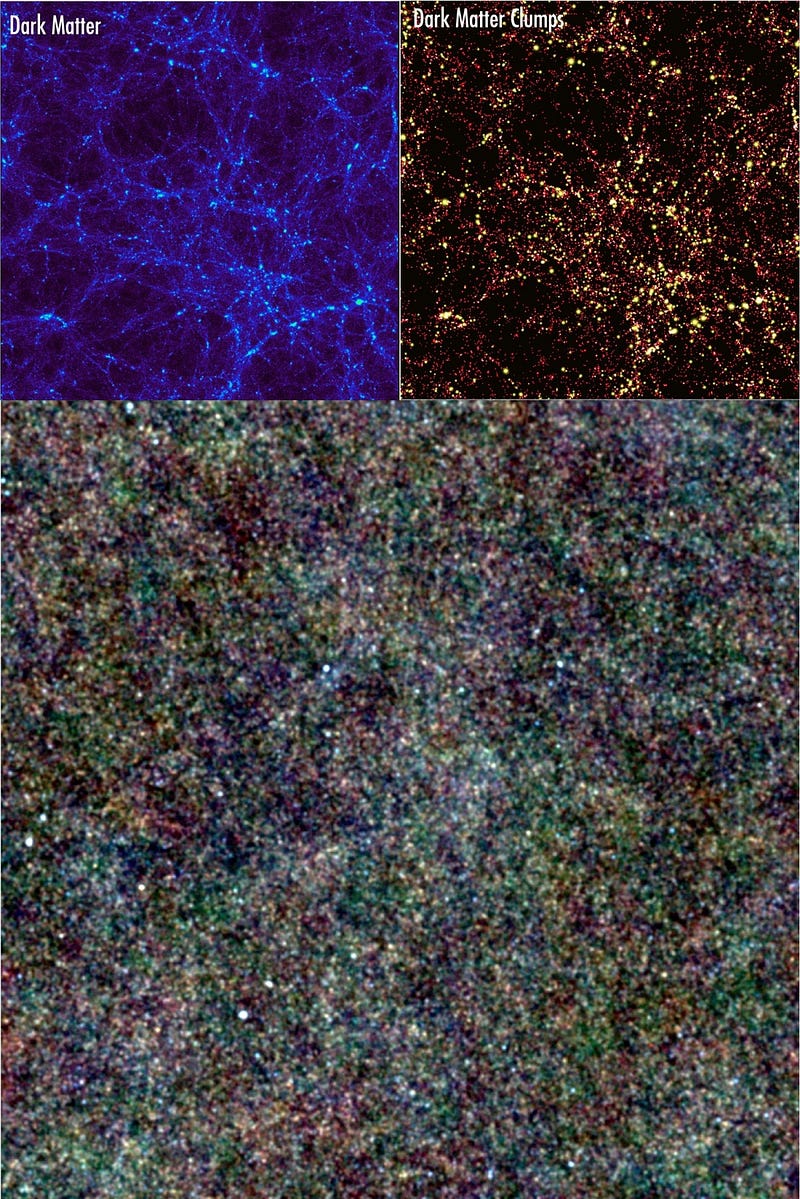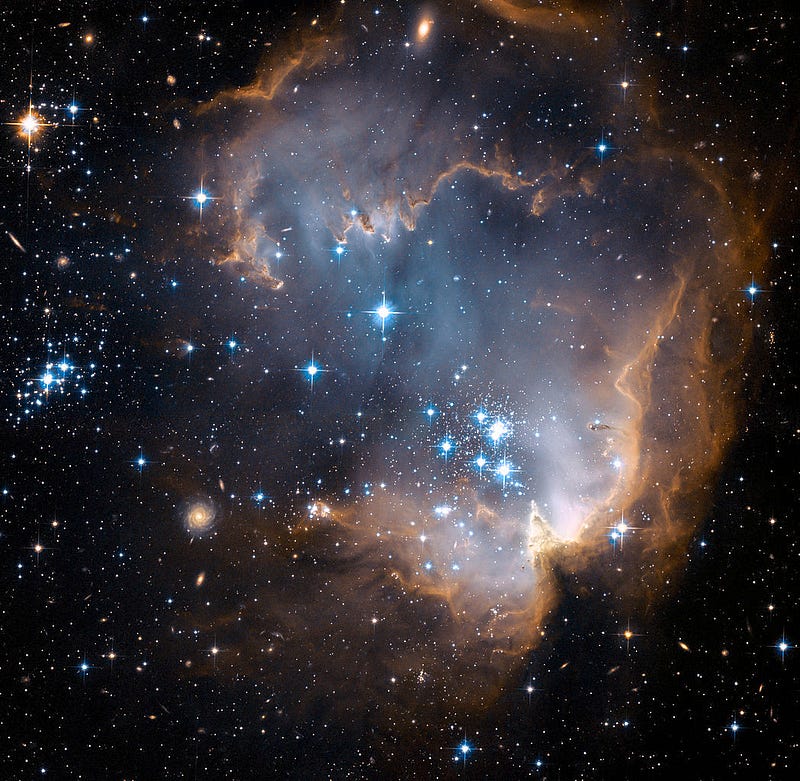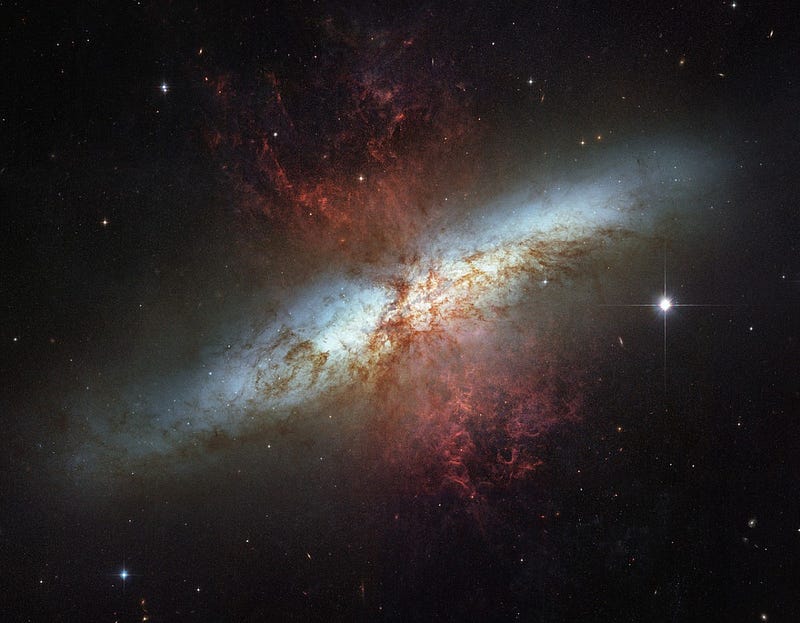The Smallest Galaxies In The Universe Have The Most Dark Matter

Dark things come in small packages, but the reason why is what’s truly astounding.
“A dwarf standing on the shoulders of a giant may see farther than a giant himself.” –Robert Burton
If you want to find dark matter, there’s one simple rule: you follow the mass. Indeed, if you look at the largest structures in the Universe — big galaxies, groups of galaxies, or even the most massive clusters — they all show the same thing: their internal motions are all too fast to be explained by the gravitation of the matter we know is there.

Inside individual spiral galaxies, their rotation speeds remain large, and in some cases even get larger and larger, as we move away from the galactic center. This cannot be explained by the sum total of all the different types of normal (atomic-based) matter we know exists: stars, gas, dust, plasma, even black holes.
Meanwhile, inside groups and clusters of galaxies, the speeds of the galaxies inside is also far too large to be explained by the normal matter. In all of these cases, if the only gravitation were due to the normal matter alone, these bound structures would fly apart, as their internal speeds are too great (greater than the escape velocity) for the mass due to all sources of protons, neutrons and electrons.

The dark matter that we need to account for the internal motions, however, is remarkably similar for each any every one of these structures. If we add in dark matter that is:
- cold, or moving slowly compared to the speed of light,
- collisionless, or unable to interact electromagnetically or through the nuclear forces, and
- in about a 5-to-1 ratio to the normal matter everywhere we look,
we can then explain the motions of individual galaxies, small groups, large groups and even the largest clusters of galaxies. It all works out beautifully.
But what if we look at smaller objects? Not the grand, spiral galaxies containing tens of billions of stars or more, but rather the dwarfs of the cosmos?

If we look at the smallest galaxies known, the ones with under a billion stars, or even just a few million, we find something counterintuitive: the motions of the stars are slower than in the large galaxies, but in order to keep these structures bound, there has to be more dark matter than the 5-to-1 ratio we find everywhere else!
In some cases, the ratio is more like 20-to-1, while in more extreme cases (at lower masses), the ratio rises into the hundreds-to-1. The smallest known galaxies in the Universe are actually tiny satellites of the Milky Way: objects like Segue 1 and Segue 3. They contain only a few hundred stars, orbiting their combined center of mass at less than the speed that Earth orbits the Sun: just 15 km/s.

But if you were to ask how much total mass you need in this volume of space to keep these stars moving at that orbital speed, the answer is shocking: you need hundreds of thousands of solar masses worth of dark matter! Put that all together, and it means you need over a thousand times as much dark matter as normal matter in these extreme cases.
This should bother you! The Universe should have been born with the same amount of dark matter everywhere, and that dark matter should be essential to structure formation. This is what our greatest cosmic simulations indicate, and on the largest scales, they line up with observations fantastically well.

So where is the discrepancy? As it turns out, the answer comes from one of the properties necessary to dark matter: that it be collisionless! If the dark matter doesn’t interact electromagnetically, that means that the presence of energetic photons — particles of light — can’t affect it, or impart momentum and energy to it. This is very, very important when you think about what happens when the normal matter collapses to form stars.

New stars are hot, emitting lots of radiation, and the most massive ones are volatile, resulting in catastrophic supernova explosions. The radiation from both of these sources streams out in all directions, giving a “kick” to everything it interacts with. All of the normal (atomic) matter that gets accelerated to speeds greater than the galaxy’s escape velocity winds up getting expelled from the galaxy and sent into intergalactic space.
In small galaxies, the gravitational pull is insufficient to hang onto this normal matter, leaving behind only a small number of stars, but also all of the dark matter, which is unaffected by the radiation. But in larger galaxies, even the most catastrophic episodes of star formation are unable to expel the normal matter; there’s so much dark matter, and so much gravity, that practically nothing gets out!

It’s kind of amazing, when you think about it, that the only reason galaxies like our own Milky Way have hung onto so many hundreds of billions of stars is because of the dark matter present. Without it, the ejected material from ultra-massive stars would have been sent into intergalactic space, meaning that the building blocks of planets like Earth and organisms like us wouldn’t have been present in the great abundances we needed!
But dark matter is real, and so instead, we’re here, too. It’s only in the smallest galaxies that gravitation can’t do its job, and so we’re left with a mediocre blob of dark matter and only a few leftover stars inside. The smallest galaxies in the Universe have the highest percentages of dark matter, but only because the normal matter didn’t have what it takes to tag along for the entire ride!
Leave your comments on our forum, help Starts With A Bang! deliver more rewards on Patreon, and pre-order our first book, Beyond The Galaxy, today!





